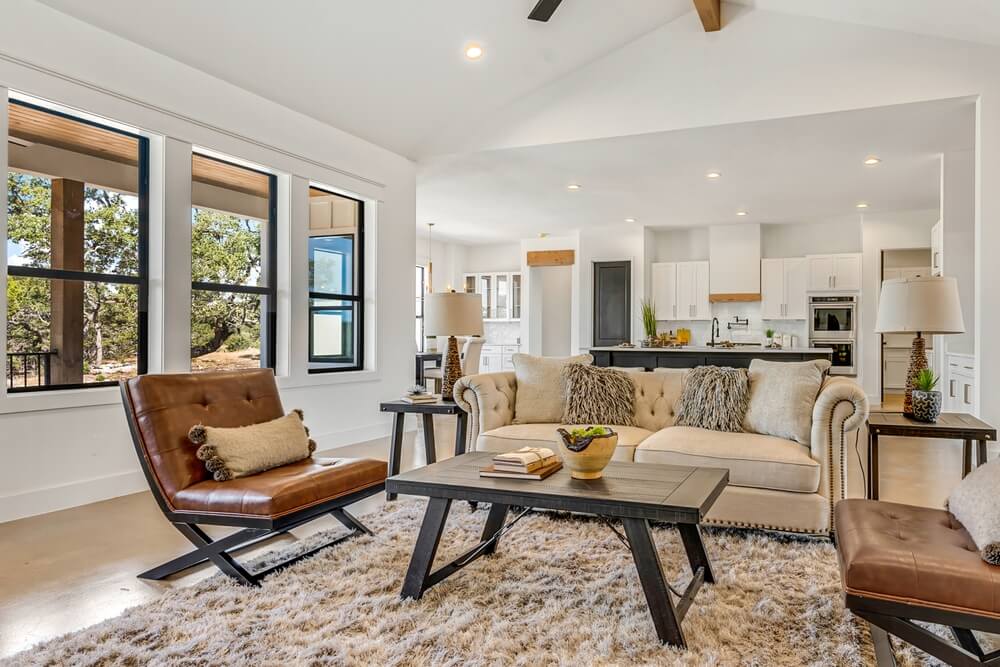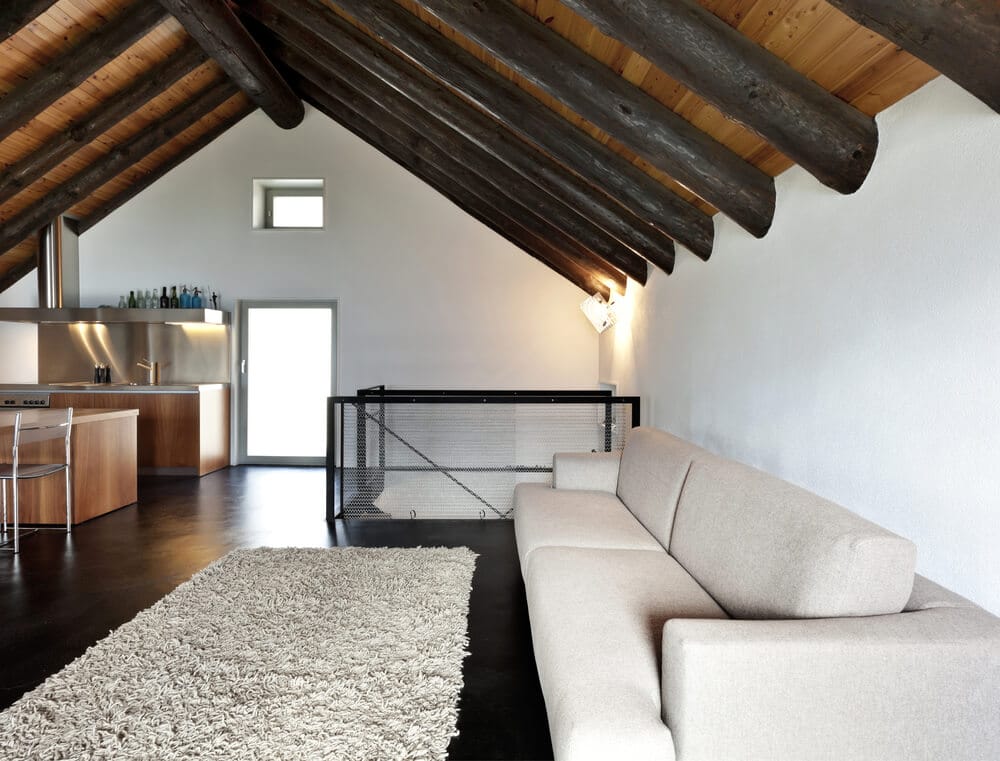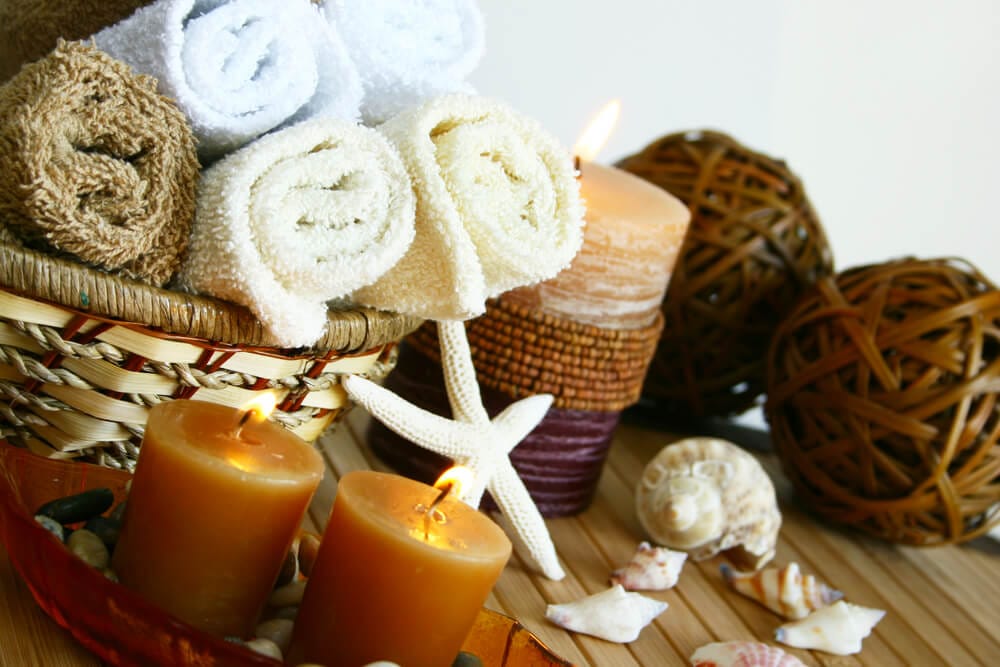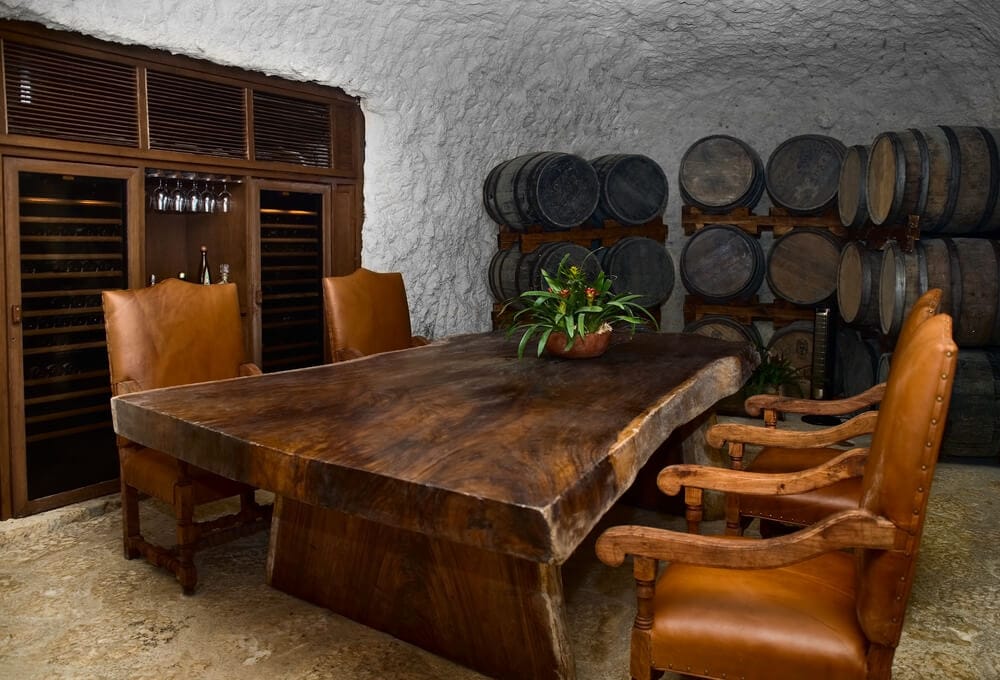31 Rooms in a House: Creative Design Ideas for Different Types of Rooms
Ever wonder what to do with all the rooms in your home? Here is a list of rooms in a house and how to decorate them.

We all know what the rooms in the house are, but when it comes to decorating them, you have to understand their purpose and function. While some might seem obvious, others might surprise you. Understanding how to design rooms properly beyond their primary use will help you create a home you'll love spending time in.
What are the best design strategies for a family room? How can you optimize storage in a walk-in closet or a utility room? In this post, we tackle answers to these questions and more. Think of this as your guide to the different rooms of a house with practical tips and creative solutions.
Entryway (Foyer)
The entryway (also known as the foyer) sets the tone for the rest of your home, so it's important to make it both welcoming and functional. Start with a statement piece like a large mirror to add a touch of elegance and create an illusion of more space. Pair this with a stylish console table where you can place decor like a vase with fresh flowers or a decorative bowl for your keys and mail.

Incorporate practical storage solutions, like a bench with built-in compartments for shoes and hooks for coats and bags. Good lighting is essential in this area, so consider a chandelier or pendant light that adds brightness and style. Personalize your entryway with artwork or family photos to give guests a glimpse of your home's character right from the start.

Living room
The living room is the heart of your home and is used for relaxation and socializing. Its design should cater to both comfort and functionality. Start with a versatile sofa with plenty of seating, and consider adding a couple of armchairs. Arrange the furniture to encourage conversation, perhaps around a coffee table or in front of a fireplace.

Incorporate various textures and colors through throw pillows, rugs, and curtains to add depth and warmth to the room. Lighting plays a crucial role, so include a mix of overhead lights, floor lamps, and table lamps to create a cozy atmosphere. Finally, personalize your living room with your favorite artwork, books, and decorative items to make it feel like home.

Family room
The family room should be a comfortable, versatile space where everyone can gather for activities like watching movies, playing games, or simply hanging out. Choose furnishings that are both kid- and pet-friendly, opting for durable materials that can withstand daily wear and tear. Pay attention to the size and placement of furniture, ensuring it doesn't obstruct the view of the TV.

Storage is key in keeping the family room clutter-free. Consider built-in cabinets, shelves, or storage ottomans for storing games, toys, and blankets. Personalize the room with paint or wallpaper that reflects your family's style, and add accessories like throw pillows and artwork to complete the look.

Dining room
Creating an inviting dining room involves a cohesive theme that enhances the dining experience. Start with the table—consider its shape and size based on the room’s dimensions and the number of people you usually host. Complement the table with comfortable, stylish chairs, and add a statement light fixture above to provide adequate lighting and ambiance.

Use a combination of wall colors, wallpaper, or wainscoting to add visual interest to the space. Add a buffet or sideboard for additional storage and serving space. Don’t forget to accessorize with table linens, candles, and a centerpiece that reflects the room’s decor theme.

Loft
Lofts offer unique opportunities for creative design, whether you transform the space into a cozy reading nook, home office, or an extra bedroom. Utilize natural light to your advantage by keeping window treatments minimal. Vertical storage is key in maximizing space.

Consider installing shelves or using tall bookcases. Choose multipurpose furniture like a daybed that doubles as a sofa or a desk that can be folded away when not in use. Rugs and cushions can add comfort and warmth, while a few plants can bring a touch of nature and freshness.

Attic
Transforming an attic into a functional room can be a rewarding project. Depending on the space, it could serve as a guest suite, playroom, or home office. Ensure your attic is adequately insulated and ventilated before deciding how to use that space.

Install skylights or dormer windows to maximize natural light. Opt for space-saving furniture like built-in beds, desks, or storage units. Use light colors to make the space feel larger and more open. Incorporate cozy elements like rugs, cushions, and throws to make the attic a comfortable retreat.

Basement
Basements hold great potential for additional living space, such as an entertainment hub, home gym, or guest suite. The first step is to address moisture control and install proper lighting to create a welcoming environment. Consider installing a large-screen TV, comfortable seating, and a home bar area for entertainment.

A home gym would benefit from durable flooring, mirrored walls, and ample space for equipment. If converting the basement into a guest suite, include a bedroom, bathroom, and small living area, using light colors and plenty of lighting to create an inviting atmosphere.

Primary bedroom
The primary bedroom (often called the master bedroom) should be a serene sanctuary that promotes relaxation and intimacy. Choose a calming color palette, such as soft blues, greens, or neutrals, and invest in high-quality bedding for ultimate comfort. To create different moods, incorporate various lighting options, including bedside lamps and dimmable overhead lights.

Ample storage is a key feature in any bedroom, so consider built-in wardrobes, dressers and nightstands with drawers. Personalize the space with meaningful artwork, photos, and decorative items. A cozy reading nook with a comfortable chair and a small bookshelf can add comfort and style.

Kids' bedroom
Designing a kids' bedroom involves creating a fun, functional space that can grow with them. Opt for adaptable furniture like beds that can convert from toddler to teen size and modular storage units that can be reconfigured as needed. Use vibrant colors and playful themes for the decor, incorporating elements like wall decals or themed bedding.

Ensure they have plenty of storage for toys, books, and clothes, using bins, shelves, and under-bed drawers. A dedicated study area with a desk and good lighting will also be beneficial as they grow older.

Nursery
A nursery should be a safe, soothing space for babies and parents. Start with a comfortable crib that meets all safety standards and a cozy chair for feeding and rocking. Soft lighting, such as a dimmable lamp or nightlight, creates a calming environment. Choose a gentle color scheme and whimsical decor elements like wall decals, mobiles and soft toys.

Practical storage solutions, such as a changing table with drawers and shelves, will help keep the room organized. Ensure the room is flexible enough to adapt as the child grows, with furniture that can transition from baby to toddler years.

Guest room
Creating a welcoming guest room involves ensuring comfort and convenience for your visitors. Start with a comfortable bed topped with high-quality linens and plenty of pillows. Provide sufficient storage, such as a dresser or closet space, so guests can unpack and feel at home.

A bedside table with a lamp, clock and a few books or magazines adds a thoughtful touch. Consider adding amenities like a small seating area, a mirror, and essential toiletries. Go for neutral, soothing colors and simple, elegant decor.


Primary bathroom
Designing a primary bathroom involves combining luxury and functionality. Opt for high-quality fixtures like a rain showerhead, a deep soaking tub, and a stylish vanity. Efficient storage solutions, such as built-in cabinets and shelves, keep the space tidy and organized. Use a neutral color palette to create a spa-like atmosphere, and incorporate materials like marble or granite for a touch of elegance.

Good lighting is essential in any bathroom, so consider adding both task and ambient lighting. To enhance the overall aesthetic, personalize the space with decorative elements like plants, artwork, and plush towels.

Guest bathroom
A guest bathroom should be both functional and inviting. Use compact storage solutions like wall-mounted shelves or a vanity with drawers to maximize space. Choose a neutral color scheme to make the room feel larger and more welcoming. High-quality fixtures, such as a modern faucet and a sleek mirror, add a touch of sophistication.

Ensure the bathroom is well-stocked with essentials like fresh towels, toiletries and a hairdryer. Decorative touches like a stylish shower curtain, a small plant, or a piece of artwork can also make guests feel at home.

Walk-in closet
A well-organized walk-in closet can significantly improve your daily routine. Custom shelving and hanging solutions maximize storage space and keep everything easily accessible. To accommodate different items, include various storage options, such as drawers, shoe racks, and jewelry organizers.

Good lighting is crucial, so install bright lighting throughout the space. A full-length mirror is essential for checking outfits, and a small seating area can add a touch of luxury. Consider incorporating a stylish rug and decorative elements to make the closet feel like a personal boutique.

Dressing room
A dressing room is a luxurious addition that provides a dedicated space for getting ready. Start with ample storage, including wardrobes, drawers, and shelving for clothes, shoes and accessories. A large mirror, preferably with good lighting, is essential for trying on outfits. Include a comfortable chair or bench for seating, and consider adding a vanity table with a mirror and good lighting for applying makeup.

Personalize the space with decorative items like artwork, a stylish rug, and your favorite accessories displayed as decor. Good organization is critical, so use dividers, trays and bins to keep everything in its place.

Home theater
Creating a home theater involves optimizing the space for the best viewing experience. Start with comfortable, tiered seating that provides everyone with a good view of the screen. Choose a high-quality projector or large-screen TV, and consider acoustic treatments to enhance sound quality.

Use blackout curtains or shades to control lighting, and install dimmable lights for a true theater experience. Decorate the room with movie posters, a popcorn machine, and cozy blankets to complete the ambiance. Ensure ample storage for DVDs, gaming consoles, and other entertainment equipment.

Game room
A game room should be a versatile space that accommodates various activities. Start with a comfortable seating area for board or video games, using sectional sofas or bean bags. Include a large table for playing cards or tabletop games.

Consider adding a pool table, foosball table, or arcade games if space allows. Good lighting is crucial, so use a combination of overhead lights and task lighting. Ample storage, such as shelves or cabinets, keeps games and accessories organized. Personalize the room with themed decor like posters and memorabilia that reflect your interests.

Home bar
A home bar can be a stylish and functional addition to your entertainment space. Start with a well-designed bar counter that provides plenty of space for mixing drinks and serving guests. Include storage for bottles, glassware, and bar tools using shelves, cabinets, or a bar cart. Ambient lighting, such as pendant lights or under-cabinet lighting, creates a welcoming atmosphere.

Choose comfortable bar stools that match the style of your bar. Decorate the space with bar-themed artwork, mirrors, and accessories to enhance the ambiance. Add a small fridge or wine cooler to keep beverages chilled and ready to serve.

Home office
Designing a productive home office involves creating a functional and inspiring space. Start with an ergonomic desk and chair to ensure comfort during long working hours. Efficient storage solutions, such as shelves, filing cabinets, and desk organizers, help keep the workspace tidy.

Good lighting, including natural and task lighting, reduces eye strain. Personalize the office with artwork, plants, and motivational decor that reflects your style. Ensure the space is free from distractions and has a reliable internet connection for optimal productivity.

Library
A home library should be a cozy, inviting space that encourages reading and relaxation. Start with custom bookshelves to house your collection, organizing them by genre or author for easy access. Include comfortable seating, such as an armchair or a small sofa, with good lighting for reading.

Personalize the space with decorative items like bookends, framed quotes, and artwork that reflect your love of literature. A small side table for your current read and a cup of tea adds a practical touch. Warm colors and soft textures create a tranquil atmosphere that is perfect for getting lost in a book.

Study room
Creating an efficient study room involves minimizing distractions and promoting focus. Start with a practical desk and comfortable chair, ensuring they are ergonomically designed. Use storage solutions like shelves, bins, and drawer organizers to keep supplies and materials within easy reach.

Good lighting, both natural and artificial, will help maintain concentration and reduce eye strain. Keep the decor simple and clutter-free, using calming colors and minimal accessories. A whiteboard or corkboard can help with organization and planning. At the same time, a few personal touches like plants or motivational quotes can make the space more inviting.

Exercise room
Designing a home gym involves creating a space that motivates and accommodates your workouts. Start with durable flooring that can withstand heavy equipment and provide a safe surface for exercise. Include essential equipment like weights, resistance bands, and a treadmill or stationary bike, arranging them to allow plenty of movement.

Good lighting and ventilation are crucial for a comfortable workout environment. Use mirrors to monitor form and create an illusion of more space. Decorate the room with motivational posters, a sound system for music, and storage solutions for equipment and accessories to keep the space organized.

Meditation room
A meditation room should be a serene, calming space dedicated to relaxation and mindfulness. Start with comfortable seating, such as cushions or a meditation bench. Use soft lighting, such as a dimmable lamp or candles, to create a peaceful atmosphere.

Use a neutral color palette and minimal decor to avoid distractions. Incorporate natural elements like plants, stones, or a small water feature to bring a sense of relaxation. Consider adding soothing sounds with a sound machine or a playlist of meditative music. Keep the space clutter-free and personal, reflecting your journey toward inner peace.

Home spa
Creating a home spa involves designing a luxurious, tranquil space for relaxation and self-care. Start with spa-like features such as a deep soaking tub, a steam shower, or a sauna. Use high-quality materials like marble or granite for an elegant finish. Enhance the calming atmosphere with soft lighting like candles or dimmable fixtures.

Use stylish cabinets or baskets and incorporate plenty of storage for towels, bath products, and accessories. Decorate with soothing colors, plush towels, and natural elements like plants or stones. Personalize the space with aromatherapy diffusers and relaxing music to complete the spa experience.

Laundry room
Designing an efficient laundry room involves optimizing space and functionality. Start with practical appliances, such as a high-efficiency washer and dryer, arranged for easy access. Include ample storage solutions like cabinets, shelves, and baskets for sorting and organizing laundry supplies.

Go for a durable countertop that provides space for folding clothes and a hanging rod or drying rack for air-drying items. Install proper ventilation for the dryer to avoid dust flying into your home. Use durable, easy-to-clean materials for flooring and surfaces.

Kitchen
The kitchen is the heart of the home, and its design should balance functionality and style. Start with an efficient layout with designated zones for preparation, cooking and cleaning. Choose high-quality appliances and position them within a workable distance from one another. Plan for ample storage, including cabinets, drawers, and pantry space, using organizers to keep everything in its place.

Incorporate plenty of counter space for meal prep, and consider adding an island for additional workspace and seating. Use a combination of task lighting, ambient lighting and accent lighting. Finish the space with stylish, durable materials like quartz or granite countertops, and personalize it with your favorite colors, backsplashes and accessories.

Utility room
The utility room is a dedicated space for the essential but often bulky appliances that keep your house running. It usually has a sink for laundry pre-treatment or cleaning spills, and it also houses a water heater and furnace.

While functionality is key, there's no reason your utility room can't be stylish, too. Easy-clean materials like floor tiles are ideal, and storage is your best friend. Use cabinets, shelves and hooks to keep everything organized. Make sure to have good lighting and ventilation.

Storage room
Designing an organized storage room involves maximizing space and ensuring easy access to stored items. Start with custom shelving and racks to accommodate different types of storage needs. Use labeled bins and boxes to keep items organized and easily identifiable. Ensure the room is well-lit with bright, even lighting.

Consider installing hooks or pegboards for hanging items like tools or sports equipment. Keep the space tidy and accessible by regularly decluttering and organizing as needed. Personalize the room with practical touches like a small workspace for sorting items and a step stool for reaching higher shelves.

Wine cellar
A wine cellar should be a stylish, functional space that ensures proper storage conditions for your wine collection. Start with custom wine racks or shelves that store bottles horizontally. Ensure the cellar maintains a consistent temperature and humidity level to preserve the wine's quality, using a cooling system if necessary.

Good lighting is essential, but avoid direct light that can damage the wine. Use elegant finishes like wood or stone to create a sophisticated atmosphere. Personalize the space with decorative elements like wine-themed artwork, a tasting table, and comfortable seating.

Cellar
Converting a cellar into a usable space involves addressing moisture control and ensuring proper lighting. Depending on your needs, the cellar can be transformed into a wine cellar, storage room, or additional living area. Start with moisture-resistant finishes and materials to prevent dampness and mold.

Install bright, even lighting to create a welcoming environment. Use custom shelving and storage solutions to maximize space and keep items organized. Personalize the cellar with decor that reflects its intended use, whether elegant finishes for a wine cellar or practical touches for a storage room.

Garage
Designing a functional garage involves optimizing space for both storage and vehicle parking. Start with custom storage solutions like shelves, cabinets, and pegboards to organize tools and supplies. Use durable, easy-to-clean flooring, such as epoxy or concrete.

Ensure there is plenty of lighting, both natural and artificial, to create a bright workspace. Include a workbench for DIY projects and repair tasks. Maximize vertical space with overhead storage racks for seasonal items and bulky equipment. Personalize the garage with practical decor, such as labeled bins and tool organizers, to keep everything in its place.

Conclusion
As you can see, there are many creative ways to organize and decorate the different rooms in the house. The main principles are pretty much the same no matter what room you're looking at - storage, function and proper lighting. By incorporating these elements you'll be able to create a space that you'll love and enjoy spending time in.
FAQ
What are names for rooms in a house?
Essential rooms in houses typically include the kitchen, living room, family room, bedrooms and bathrooms. Each serves a distinct purpose and contributes to the overall functionality and comfort of the home.
How can I make a small entryway more functional?
Even a small entryway can be made functional with smart storage solutions such as wall-mounted hooks, a slim console table, and a mirror to create the illusion of more space. Opt for multipurpose furniture and ensure good lighting to enhance the area.
What are some creative ideas for designing a family room?
To design a family room, choose durable, comfortable furniture and arrange it to promote social interaction. Incorporate ample storage for games and toys, and personalize the space with decor that reflects your family's interests and style.
How do I decide on the layout for different rooms in a house?
Deciding on the layout for different types of rooms in a house involves considering the room's function, traffic flow, and the natural light available. Prioritize ease of movement and ensure furniture placement enhances the room’s purpose and overall aesthetic.
What are some tips for maximizing storage in various rooms in a home?
Maximize storage by using vertical space, incorporating built-in shelves, and choosing furniture with hidden storage compartments. Customize the storage solutions to fit your specific needs for each room in a home to significantly enhance organization and functionality.
